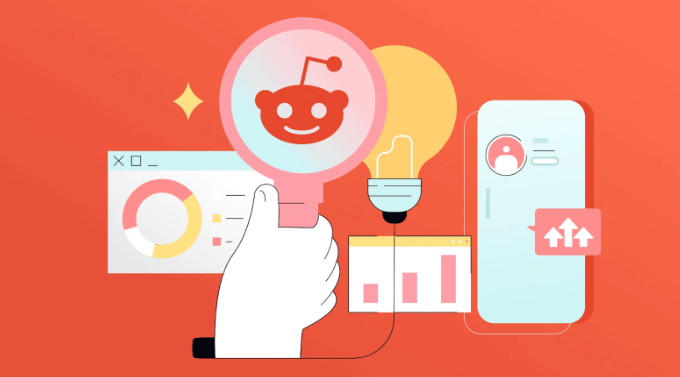
Twitter, rebranded as X, remains a dynamic platform for real-time conversations, with over 600 million users engaging daily. Its algorithm, a sophisticated system shaping what content appears on users’ “For You” feeds, plays a pivotal role in determining visibility and engagement. For marketers, creators, and businesses, understanding the Twitter algorithm in 2025 is essential to craft content that resonates and reaches broader audiences. This article explores the mechanics of the algorithm, its key ranking signals, and strategic approaches to maximize impact, offering a clear roadmap to navigate the platform’s evolving landscape.
The Mechanics of the Twitter Algorithm
The Twitter algorithm, often referred to as the X algorithm, is a machine-learning-driven recommendation system that curates the “For You” feed, distinct from the chronological “Following” tab. It processes billions of data points daily, analyzing user interactions, content relevance, and contextual signals to select and rank approximately 1,500 tweets from a pool of 500 million daily posts. The process unfolds in three stages:
- Candidate Sourcing: The algorithm gathers tweets from accounts you follow (in-network) and those you don’t (out-of-network), based on your past interactions and the behavior of similar users.
- Ranking: Each tweet is assigned a relevance score using a machine-learning model, factoring in engagement metrics, recency, and alignment with your interests.
- Filtering and Serving: The system applies filters to remove spam, muted accounts, or low-quality content, then mixes organic and sponsored posts to create a personalized feed, processed in under 1.5 seconds.
This system ensures users see content tailored to their preferences, while creators must align their strategies with its priorities to boost visibility.
Key Ranking Signals Driving Visibility
The algorithm evaluates multiple signals to determine which tweets surface prominently. Understanding these signals is crucial for optimizing content:
- Engagement Metrics: Likes, retweets, replies, and quote tweets are weighted differently. Replies carry the most weight (up to 27 times more than a like), as they spark conversations, followed by quote tweets (2 times more than a like) and retweets. High engagement within the first 2–3 hours signals quality, boosting a tweet’s reach.
- Recency: Fresh content is prioritized, with recent tweets appearing higher in feeds. Posting during peak audience activity hours enhances early traction.
- Relevance: The algorithm analyzes your past behavior—likes, follows, clicks, and time spent on posts—to match content to your interests. For example, frequent engagement with tech topics prioritizes related tweets.
- Content Type: Multimedia posts (videos, images, GIFs) drive up to 3 times more engagement than text-only tweets, earning higher rankings. Polls and threads also perform strongly due to their interactive nature.
- Account Credibility: Verified accounts, especially those with premium subscriptions like X Premium, receive a visibility boost. Consistent, high-quality posting enhances credibility, while spammy behavior (e.g., excessive linking) reduces it.
- Trending Topics: Tweets tied to trending hashtags, keywords, or events gain a visibility boost, especially if posted early in the trend cycle.
- Location and Network: Content relevant to your geographic location or from accounts you frequently interact with is prioritized, creating a network-driven ripple effect.
These signals work together to ensure the feed feels personalized and engaging, rewarding content that aligns with user behavior.
Strategic Approaches to Leverage the Algorithm
To maximize reach, creators must craft content that aligns with the algorithm’s priorities. Here are actionable strategies to boost visibility:
Post During Peak Hours
Timing is critical, as early engagement signals quality to the algorithm. Use X’s analytics (available via a Creator or Business account) to identify when your audience is most active. General trends suggest:
- Weekdays: Tuesday through Thursday, 9 AM–11 AM or 5 PM–8 PM local time, often see high activity.
- Weekends: Saturday and Sunday mornings (8 AM–11 AM) capture leisure scrollers. For example, a tech brand targeting U.S. professionals might post at 10 AM EST on Tuesdays to hit peak engagement. Test different times and analyze performance to refine your schedule.
Prioritize Multimedia and Interactive Content
Tweets with visuals or interactive elements outperform text-only posts. Incorporate:
- Videos: Keep them under 2 minutes and 20 seconds, uploaded natively to avoid penalties for external links.
- Images or GIFs: Use high-quality, eye-catching visuals to stop scrollers.
- Polls and Threads: Pose questions or create multi-part threads to spark conversation. For instance, a fitness brand could run a poll asking, “Cardio or Strength?” to drive interaction.
Engage Actively with Your Audience
Respond to comments, mentions, and retweets within the first 2–3 hours to keep conversations alive. Thoughtful replies, like thanking a user for a retweet or answering a question, signal activity to the algorithm. Joining trending discussions or commenting on viral posts in your niche can also expose your generic anchor account to new audiences.
Leverage Trending Hashtags and Topics
Incorporate trending hashtags or keywords early in their cycle to ride the wave of visibility. For example, during a major event like a product launch, a tech brand could use #TechTrends2025 to align with real-time conversations. Avoid overusing hashtags (3–5 is optimal) to prevent being flagged as spam.
Build Credibility Through Consistency
Post 2–8 times daily to maintain algorithmic favor without overwhelming followers. Use automation tools to schedule posts during peak hours, ensuring a steady presence. Verified accounts or those with X Premium subscriptions often see higher reach, so consider applying if eligible.
Avoid Algorithmic Pitfalls
The algorithm penalizes low-quality or spammy content. Avoid:
- Excessive Links: Tweets with links may see reduced visibility, as they direct users off-platform. Place links in comments instead.
- Watermarked Content: Repurposed videos from other platforms (e.g., TikTok) are deprioritized.
- Spammy Behavior: Overusing hashtags, posting repetitive content, or engaging in bot-like activity can lower your ranking.
Analyzing Performance to Refine Strategy
X’s analytics dashboard provides metrics like impressions, engagement rate, and profile visits. Monitor these to identify what resonates:
- High-Performing Content: If video tweets outperform text, prioritize multimedia.
- Optimal Timing: Check which posting times yield the highest impressions.
- Audience Insights: Analyze demographics to tailor content to their interests. For example, if a thread about industry tips gains more replies than promotional posts, focus on educational content. Regularly test new formats, hashtags, or posting times to adapt to algorithmic shifts.
Evolving with the Algorithm
The Twitter algorithm in 2025 is more user-centric than ever, emphasizing engagement, relevance, and quality. Recent updates have leveled the playing field by amplifying smaller accounts, making it easier for new creators to gain traction. The algorithm also downranks misinformation and promotes diverse voices, aligning with platform goals for authenticity. By crafting high-quality, interactive content, posting strategically, and engaging actively, you can harness the algorithm’s power to boost your reach and build a thriving presence on X.





